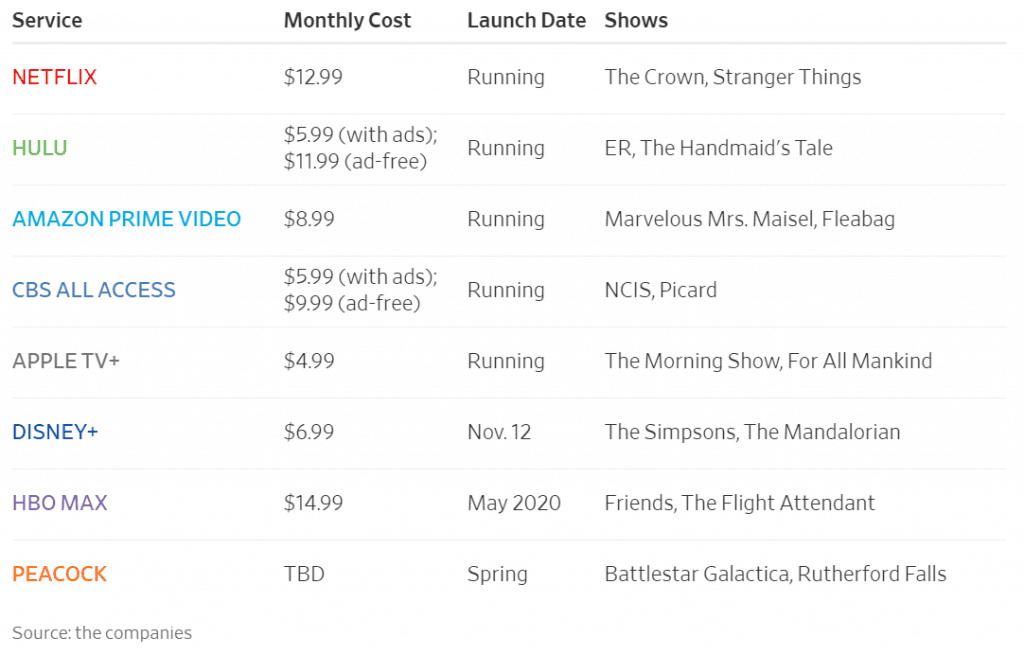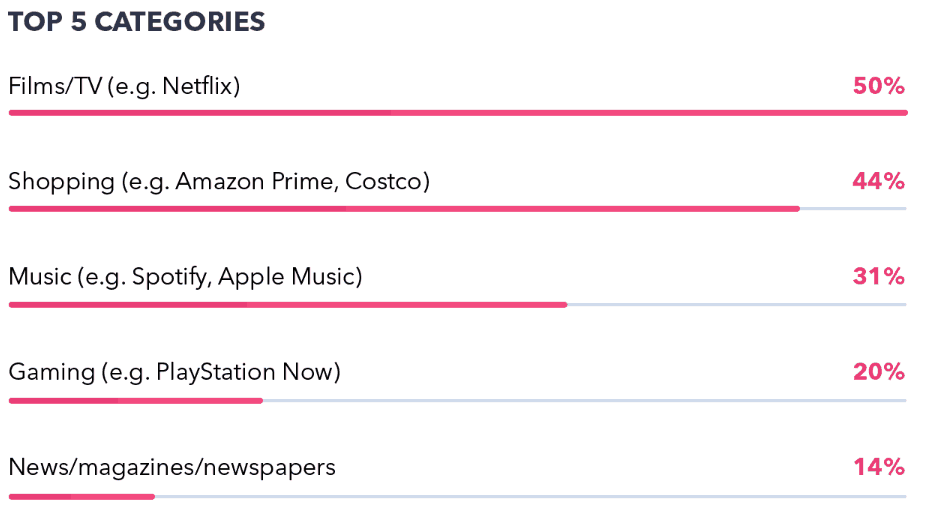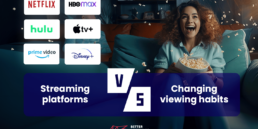Could there be a more fitting example of a “first world problem” than complaining about the abundance of streaming services? It’s certainly a nice problem to have, but there is no doubt that the wild proliferation of platforms is heading for a tipping point, and major changes in the industry could be just around the corner.
For years, video streaming services have been credited with what was once seemingly impossible: breaking the monopoly of cable TV providers. Services like Netflix or Hulu have not only spearheaded the video streaming revolution but also created a viable alternative to ubiquitous, unrestricted piracy. Albeit not free, they provided users what piracy simply couldn’t: convenience, well-organized content, spot-on recommendations and reliability.
Trouble in paradise
Streaming platforms have grown to dominance by properly leveraging a number of their attractive selling points, i.e. freedom of choice, exclusives, and something cable subscribers could only dream of: a possibility to cancel anytime – what’s not to like?
Well, while exclusives may be the main draw to specific platforms, they are also the cause of many subscribers’ headaches: no matter how many services you subscribe to, you may never be completely happy. This situation results from several problems.
1. A combined fee for all the streaming services may turn out expensive
New players on the market have to use careful pricing to lure new subscribers, especially because many of them may already be subscribing to some services. An attractive price is not everything – it also requires an appealing combination of original and licensed content.

The monthly cost and attractive original shows may tip the scales in favor of a particular platform.
New players are trying to attract audiences by focusing on content scale, exclusive content and competitive pricing. Disney’s streaming platform will be priced at just $6.99 per month, which is clearly a jab at Netflix.
When you like The Wire as much as Rick and Morty and Man in the High Castle, you’re in trouble – to watch these three shows you would need to subscribe to three different streaming platforms – HBO Go, Netflix and Amazon Prime Video. But there is a limit to the number of streaming services a person is ready to subscribe and reasonably take advantage of.
2. Too many subscriptions
The recurring monthly cost is just one of the problems. With too many platforms to choose from, so-called “subscription fatigue” (the feeling among streaming-video subscribers that there are too many services, choices and too many monthly fees) seems to set in.
Subscribing to a growing number of various video streaming services is not only expensive but also becomes unwieldy at some point. Juggling multiple passwords, paywalls, and remembering which platform owns which exclusive may make your head spin. It draws users back to simplicity, read: piracy or various pay per view options.

Source
Alternatively, you can use a completely new platform that aggregates the content from multiple streaming platforms and allows searching from one place. Services like www.reelgood.com or www.justwatch.com offer searching across all your subscriptions.

Source
What to make of all this and what does it mean for the average consumer? A recent study conducted jointly by TV Time and UTA IQ analysed consumer sentiment surrounding the evolving streaming media landscape, and the findings were not very optimistic:
- 67 percent of consumers find toggling between multiple services frustrating
- 58 percent of consumers find managing numerous logins annoying
-
45 percent say it’s already too difficult to find what they’re looking for
3. The death of ownership
Less and less content is offered in the traditional “buy and own forever” format today. Consumers are increasingly forced to subscribe and regularly pay for access. This, in turn, forces them to make difficult decisions about which monthly subscriptions to keep, and which to cancel to shave a few bucks off their monthly subscription spend.
Do I really watch Netflix? Should I continue my subscription? Am I going to watch it anytime soon? Have I seen a single episode of “BoJack Horseman” this month? – these are really hard questions that quickly verify if you’re getting the most of the service you’re paying for.
Well, the problem is that ownership is becoming a thing of the past across multiple other content categories – not only video. Whether it’s cloud storage, ebooks, music, video games (Google Stadia, Xbox Game Pass), meditation apps (Headspace), we hardly ever own anything today.
For some people, monthly subscription fees across multiple types of services amount to dozens of dollars. Apparently, however, not all subscriptions are made equal. A study by GlobalWebIndex shows that people are much more likely to subscribe to a video streaming platform than pay monthly gaming access or magazine subscription.
 GlobalWebIndex: Not all subscriptions have the same perceived value for the consumers: video entertainment reigns supreme
GlobalWebIndex: Not all subscriptions have the same perceived value for the consumers: video entertainment reigns supreme
4. No sports, no news, and no live shows
Each streaming service attracts audiences with a combination of original content and old shows people love and want to “own” forever. This also is an important draw, but at the same time, you almost never get any sports, news and live shows that are a staple of each cable plan. If you’re a fan of sports, you will almost certainly need a cable TV subscription on top of your Netflix.
5. Content rotation
Many streaming platforms including Hulu, Amazon Video and Netflix traditionally rotate their content. No licensed film or series is guaranteed to stay on the platform forever. Some shows may not be available the very moment you finally go about watching them after months of planning to do so.
According to a study conducted by Deloitte 56% of consumers are frustrated when content vanishes due to expiration of the rights. But this is exactly what happens to almost all non-original content offered by streaming services.
What the new launches mean for the streaming industry and the subscribers
Newcomers may shake the land a bit. With Apple TV+ and Disney+ launched this month and NBCUniversal’s Peacock and HBO Max scheduled for 2020 it’s going to get crowded. At the same time, Netflix, Hulu, Amazon Prime and CBS All Access are not going anywhere soon, which means that – before we see some acquisitions and consolidation in the industry – there will be many players fighting for dominance.
A recent Amdocs report shows that growing competition among streaming services is a good thing for the consumers, and here’s why:
- Over time, it will lead to consolidation and acquisition and aggregation of content between a few big players. This will make the streaming offer more attractive for the subscribers. Some of this bundling is already happening, as you get free Hulu subscription if you subscribe to Spotify.
- The competition will drive subscription prices down. And, according to the report, 37% of the respondents consider price as the main reason for switching (only 22% quoted content offerings as the main reason for switching).
-
A combined monthly fee for 3-4 streaming services is still cheaper than paying your cable subscription, not to mention that users can freely cancel their subscription whenever they want.
Will the new big players make a difference?
Today every major publisher is making their foray into streaming in a bid to get a slice of the pie. Apple, Disney and WarnerMedia are launching their TV streaming services and trying to leverage their, original content. And rightly so! But the market is more saturated and less hungry for the content.
A recent report found that 27 percent of the surveyed 1,000 US consumers spend on average $100 on their streaming platform subscriptions combined. At the same time, 59% of them say they’re happy with their subscriptions and just 22% say they would be ready to add another subscription. This does not sound promising for the new players, but subscribers shouldn’t complain – after all, publishers are doing all they can to please them.
If you find this article valuable, you can share it on social media →
Read more about the VOD & OTT Industry!
March 7, 2024
7 reasons why is sports streaming becoming so popular
Learn more about the reasons why sports streaming is becoming more and more popular right now.
February 29, 2024
Why should streaming platforms adapt to changing viewing habits?
Discover the strategies through which streaming platforms adjust to changing viewing habits.
February 20, 2024
What is Titan OS and what do we know about it so far?
Explore what distinguishes Titan OS, a new smart TV operating system. Discover its unique features before giving it a try yourself.
Are you looking for a partner to build a Video Solution?
Leave your email and a short description about your project. We would gladly discuss different cooperation possibilities!





